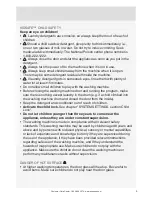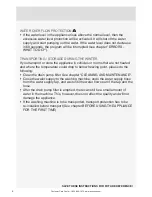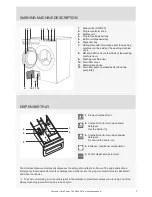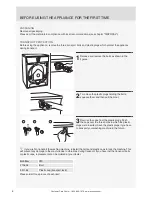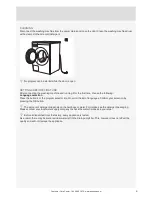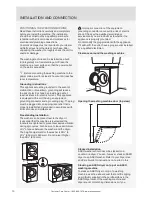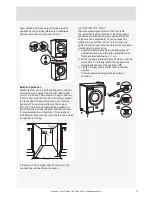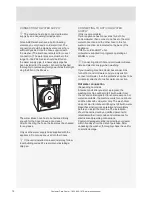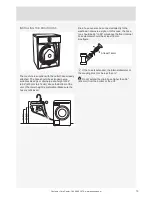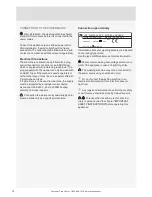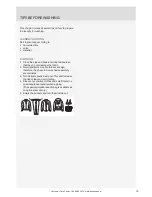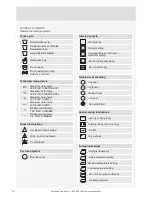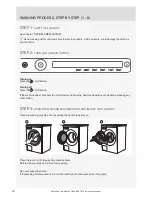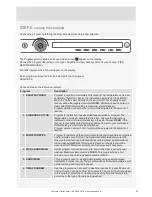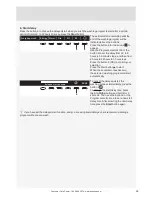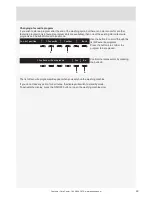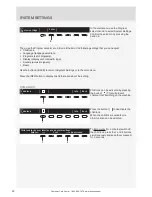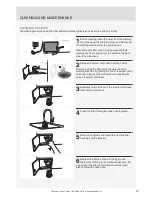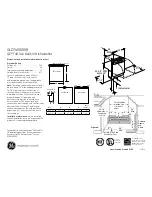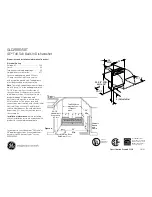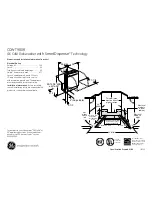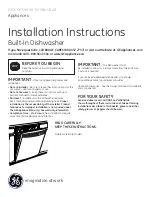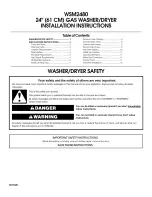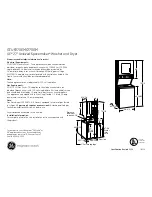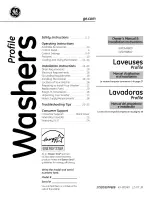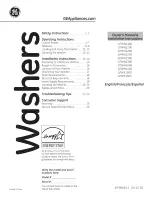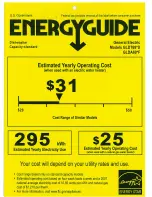
19
Customer Care Center, 1-800-898-1879, www.askousa.com
STEP 4:
ADD THE DETERGENT AND THE CONDITIONER.
Recommended amount of detergent is usually speci
fi
ed on the detergent packaging. When washing a
smaller amount of laundry, the amount of detergent used can be decreased.
Observe manufacturers' recommendations regarding the type of detergent suitable for certain temperatures,
load size, and water hardness.
Liquid detergents
We don’t recommend liquid detergents because they tend to produce more suds than powder detergents
when used in water temperatures of (150 F°) HOT or higher.
If you should try a liquid detergent, start with a very small amount, such as 1 to 2 tablespoons. Also, liquid
detergent can be used for all programs without prewash, so add it into the main wash compartment.
Detergents
Laundry detergents are available in low-,
normal- and high-sudsing formulas. A detergent´s ability to clean is not relative to the amount of suds
it produces. Excess suds in a front-loading washer actually interfere with the cleaning because they
cushion the tumbling action. Also, high-sudsing detergents are more di
ffi
cult to completely rinse out. The
use of anything other than a low-sudsing detergent can cause severe oversudsing, which could cause
suds to backup through the detergent compartment and run down the front of the washer onto the
fl
oor. If
oversudsing occurs, run the wash through one or more rinse programs until all items are thoroughly rinsed.
Remove the laundry then run the washer through a Normal wash program to get rid of any remaining
detergent.
We recommend that you don’t use bleach in your ASKO washer. The tumbling wash action, temperature
control options, extended wash times and proper amount of detergent are su
ffi
cient to remove most stains.
Recommended powder detergents
ASKO washers use 50% to 75% less detergent than most other washers. This is because of their low water
consumption and the fact that all the wash water is repeatedly circulated through the laundry, ensuring that
all the detergent is fully utilized. We recommend that you use powder detergents made speci
fi
cally for front-
loading washers. These are sometimes called HE (High-E
ffi
ciency) detergents. Please visit our homepage
www.askona.com to see the powder detergents we recommend for ASKO washers.
We recommend that you do not use any powder detergent that doesn’t wash completely out of the detergent
drawer.
We recommend adding the powder detergent immediately before the washing cycle. Otherwise, make
sure the detergent compartment in the dispenser tray is completely dry before adding the powder detergent,
as otherwise, the powder detergent may cake before the start of the washing process.
Detergent Amounts Based on Water Hardness
The amount of detergent needed can vary due to di
ff
erences in water hardness. To determine the water
hardness in your area, contact your local water utility or area water softening company. The harder the water,
the more detergent you may need. Refer to the chart below for the recommended detergent amounts based
on water hardness. Remember, you should adjust the amount of detergent you use by small amounts until
you
fi
nd the correct amount.
Note that 12 grains and higher is extremely hard water and detergent alone may not be enough. You may
need to use a water softener to maximize the performance of your washer. Also, in areas with hard water (9+)
you may need to wash at lower temperatures to prevent hard water deposits from forming in the tank and
wash system.
Amount of detergent to use
The amount of detergent needed varies among the di
ff
erent brands, but for most detergents, you need only
one or two tablespoons. Using too much detergent can result in detergent residue being left in your clothes,
which can cause them to appear gray or dingy. You should start with a small amount of detergent and
increase it only if the cleaning results are unsatisfactory.

